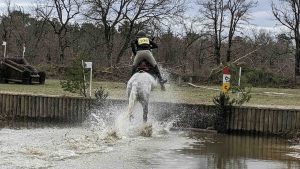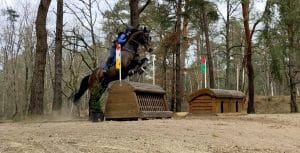The farrier works approximately every six weeks with the horses in his charge. But the latter do not always have an appropriate education…
Is the farrier’s safety still there?
The role and duty of the farrier, a brief reminder
The role of the farrier is to preserve the hoof capsule by ensuring optimal functionality of the foot. To do this, it is necessary to take into account various parameters specific to each individual, such as conformation, balance, age, activity, environment.
The respect of these principles allows a homogeneous distribution of the forces which act on the various structures, in order to optimize the locomotion.
It is also essential that the professional has a good knowledge of anatomy, biomechanics, an ability to observe the environment, grounds, discipline, that he is informed of any antecedents in order to carry out a anamnesis to finally orient the act of farrier in the right direction.
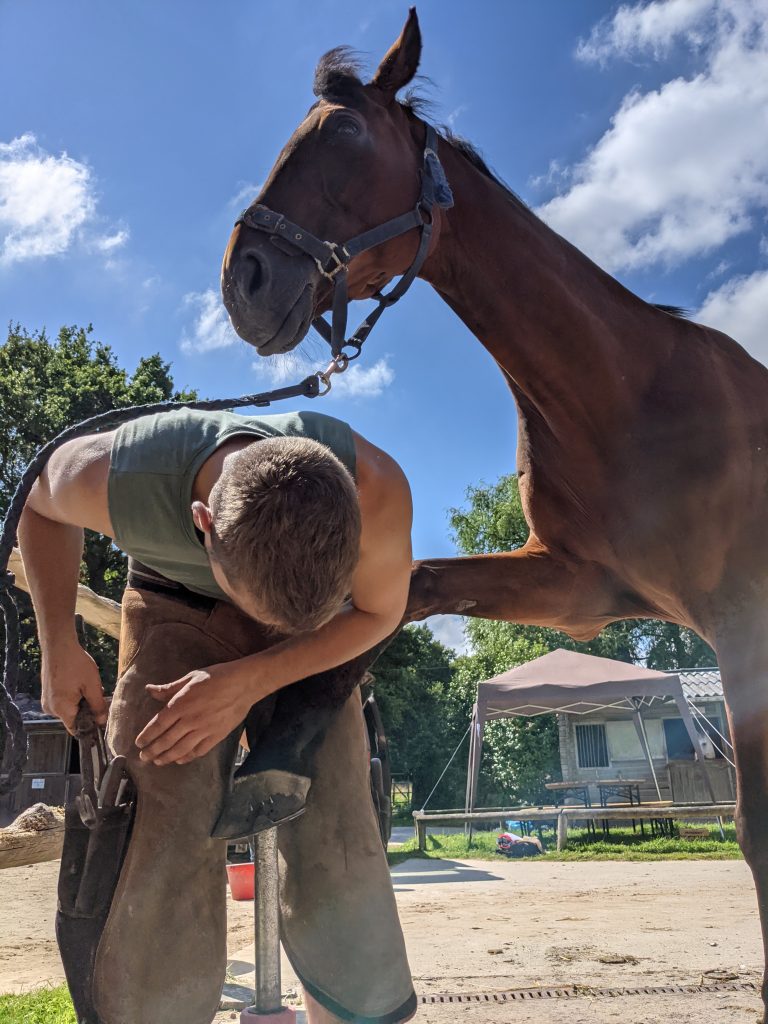
The working conditions of the farrier
In order to fulfill its missions, certain fundamental principles should be respected. But is this still the case? Are necessary :
- A flat ground for a good visualization of the limb conformation, not slippery.
- A fixed attachment point, with an easily detachable knot.
- A shelter. In the rain, cutting tools slip out of the hands and endanger the physical integrity of the horse, the farrier and / or the foot keeper.
- Minimum cleanliness of the limbs: a horse must be relatively clean, without a significant presence of mud for example, which hinders handling.
- Electricity nearby because some operations require the use of electrical tools.
- Water available because the adjustment operation is most often done on a heated horseshoe which must be cooled with water.
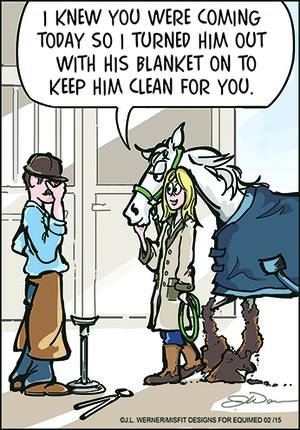
Safety, a necessity that is sometimes lacking
Testimonials on this subject are not uncommon:
“My projects are on standby because I had an accident with a horse. I take a little rest and perspective with work, I have two broken ribs”, declares a farrier.
“My farrier is still injured. She’s too nice, agrees to help out difficult horses and that’s what happens!”, an owner alarmed.
“I admit that I am sometimes a little ashamed. My young horse does anything with the farrier, until he leans on him to stand up! When I set foot on him, he never does that though… I’m afraid that one day an accident will break out while he is shoeing”, says an owner.
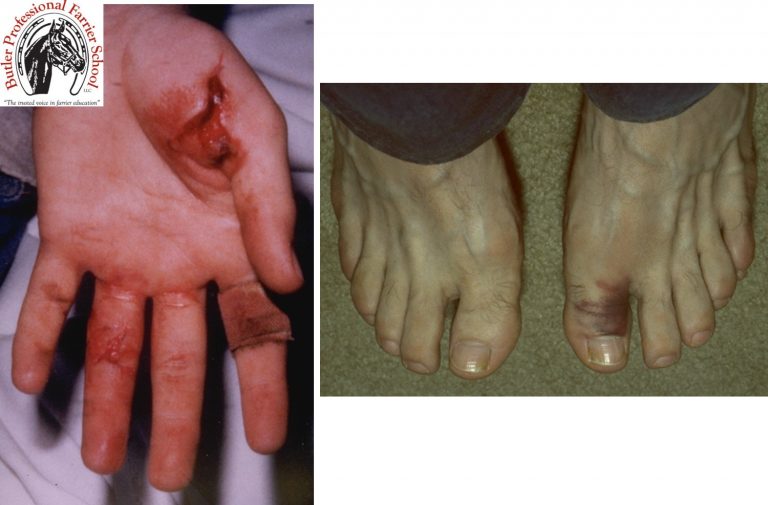
“For our safety, it is essential that horses are properly educated regardless of their age”, comments Antoine Zaccone. Namely, to give the feet without fear and without withdrawal and to be able to hold on the tether long enough. The farrier must also know how to modulate the organization of his tasks according to the level of education or the physical condition of the horse, in the case of a horse presenting joint pain in particular. Being able to work in a calm and clear environment also contributes to the safety of the horse and the farrier during his work, as Antoine reminds us:
“The passage of riders and their horses in the alleys worries the horse attached, just like the passage of machinery. Likewise, the distribution of rations causes emulation throughout the stable, making the action of shoeing much more difficult and potentially dangerous. Finally, the distance from his congeners causes his anxiety and can lead to dangerous behavior. In the event of a problem, despite these various provisions, operators must also be able to easily extricate themselves from a risk situation. Cluttered space, which limits the work surface, increases the risk of injury to the horse in the event of restlessness. Old irons and nails, as well as tools, should be kept as far away as possible to prevent the horse from stepping on them and puncturing the sole. For the respect and safety of all, it is advisable to be benevolent towards each other”.
The respect of a few simple safety rules has a direct impact on the physical integrity of the farrier, on the quality of his work, but also on the physical integrity of the people around him and of the horse itself. “Working on a living being devoid of speech is complicated, a few rules of common sense help not to make the task more difficult than it already is”, concludes Antoine Zaccone.
Article proposed by Antoine Zaccone, The Perfect Fit Trainer
Facebook : Antoine Zaccone
Website : The perfect fit trainer



